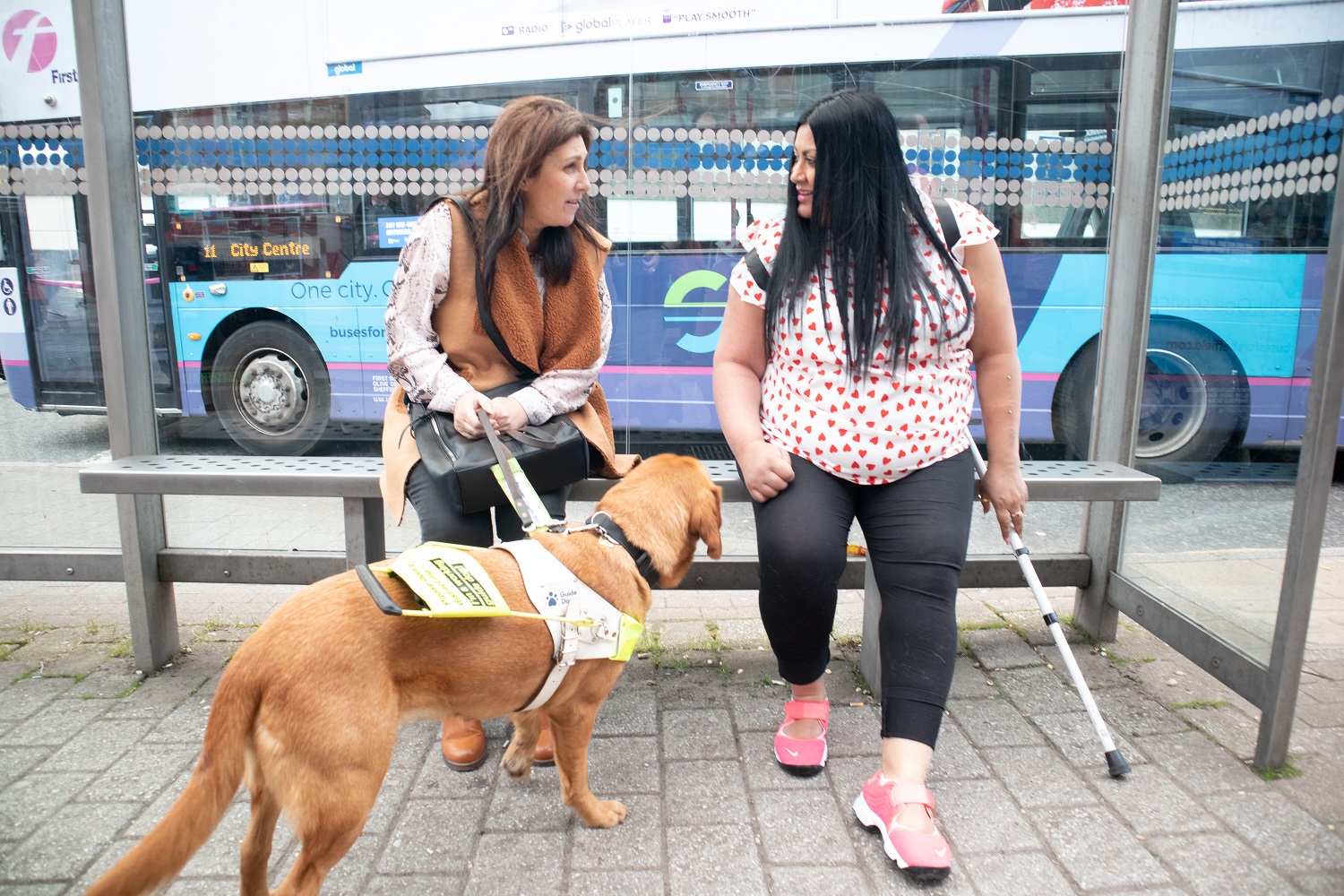Research into 'bus stop bypasses' released
A research report published today (4 April 2024) explores the effects of ‘bus stop bypasses’ - and other arrangements involving a bus stop and cycle track - on pedestrians. It focuses on questions about the accessibility of streets and the effects of this infrastructure on disabled people.
‘Bus stop bypasses’ involve continuing a cycle track at a bus stop to maintain the separation of people cycling from motor traffic, enhancing the safety of cycling as a mode of transport. However, the research finds that the need to cross a cycle track can disadvantage some pedestrians, particularly if they are blind or partially sighted.
The research was carried out by Living Streets, the UK charity for everyday walking. It finds that conditions vary greatly depending on the number of people walking, wheeling, cycling and the number of buses. Where a good quality cycle track is provided, cycling on the pavement is rare. The most problems arise when the space made available for the bus stop, cycle track and pavement is insufficient.

Image (c): Heard in London
The research concludes that work is needed to bring disabled people and designers together to identify the reasonable adjustments that are needed on equalities grounds. It also recommends that design guidance should be revised, and local authorities should work to understand which cycle tracks are likely to provide issues.
Stephen Edwards, Chief Executive, Living Streets comments:
“There have undoubtedly been problems with some bus stop bypasses – especially when buses and large numbers of people walking, wheeling and cycling have had to share limited space. In such environments, current designs have excluded blind and visually impaired pedestrians.
“If we are to encourage more cycling, cycle tracks must provide consistent protection from vehicular traffic. However, this should not come at the expense of disabled pedestrians. The design of bus stop bypasses has been poor at some locations. We urgently need to consider solutions, establish national standards and include disabled people in the design.”
The observations, conclusions and recommendations in the report are not a definitive statement of Living Streets’ position on bus stop bypasses or continuous footways. Instead, the charity hopes that in publishing its finding, a much bigger conversation about what changes are needed to make streets more inclusive will follow.

About the author
Kathryn Shaw
Head of Communications and Marketing, Living Streets / [email protected]